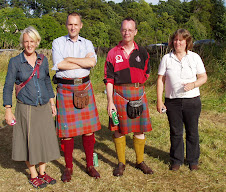
Enjay, you must start growing them at once. They are very easy, very satisfactory to contemplate in all stages of development, and very, very delicious. Chitting is, as you imply, just a matter of encouraging them to do what they do naturally. You set them out in a cool, well-lit, frost-free position and let them sprout. That gives them a bit of a head start. They are tough little tubers, but the foliage is susceptible to frost, so they can’t go in the ground too early.
Are you in Britain? If so, I highly recommend Alan Romans as a supplier. He doesn’t publish a paper catalogue – you have to go on-line. I used to order from Thompson and Morgan, but one year recently, after I had, as usual, spent happy hours during the winter reading and re-reading their interesting list and finally narrowing things down to my four choices – they sent me two substitutes. It spoiled all the fun.
I would also recommend growing Pink Fir Apple, a salad potato so beloved of trendy veggies that I long avoided it. I grew some last year, and am converted. Prolific, delicious. It’s sort of a funny shape which is presumably why you don’t get it in shops. (It's on the far right in the picture above.) A warm potato salad with Pink Fir Apples and a couple of fistfuls of sorrel and some butter is a dish fit to set on the table next to the nectar and ambrosia. Hugh Fearnley-Whittingstall’s recipe. The heat of the just-cooked potatoes wilts the sorrel.
Tamar, thanks for the tip about growing potatoes on the surface. I’ll read up on the possibilities when were are in Strathardle and I am reunited with my gardening books. I think it can be done under black polythene, as well. Digging isn’t the problem – that can be done a forkful at a time, as required for lunch, and grandchildren enjoy helping. It’s like digging for treasure. The difficulty, strength-wise, will be getting them in, in that delicious but narrow window of opportunity in April and early May when everything has to be done at once.
For the moment, I proceed like the Little Engine That Could. I have set the potatoes to chit. When we are next in Strathardle (from tomorrow) I will prune the autumn-fruiting raspberries I put in last year. Pruning consists of cutting them down to the ground, because they fruit on the current year’s growth. I can do that. I want to start digging holes for the courgettes – dig a hole, half-fill with compost or manure, fill it up, mark with a stick. I’ll need eight such sites in all, and hope to establish maybe three this week. Chose a place for the Mara des bois strawberries I have ordered, and weed and fork it over. All that should be possible.
And, oh yes,
...knitting.
I speed onwards with the Princess with winged sandals on my feet. I’ve reached row 22 of the 11th centre repeat. My mistake, I think, was to stop, last time, just after that pesky initial motif, with the thought of making it easy for myself to resume. On the contrary, I just felt mired down in endless easy knitting. Whereas now that I’ve toiled through the motif again, easy is delightful and speed is enjoyed. I should pass row 23 today which is, in a sense, half-way through the 46-row repeat. “In a sense”, because another 23 stitches will be added in the second half.
Jean, thank you for the memories of your mother-in-law’s contract knitting (and all best wishes for your move). There is simply no way that hand-knitting can produce a living wage, or even very much by way of pin money. The knitters I often wonder about these days are the ones who knit for designers.




I don't dig trenches for potatoes. I plant them rows in flat beds covered in cardboard, using a bulb planter to cut through the cardboard into the soil layer as deeply as possible.(Put the cardboard down a couple of weeks before to get damp, and weigh it with bricks). The potato plant grows up through the hole and the potatoes grow under the cardboard in the dark. No earthing up necessary. If I need to protect the young plants from unexpected frosts I put a thick layer of straw on top of the cardboad, held down with a coarse net.
ReplyDeleteI don't think the yield is quite as good as the traditional method but it only needs about 10% of the effort!
I once read a comment by a woman who used to knit for designers; it was pin money but she loved working with the beautiful wool they supplied. She eventually stopped because it wasn't enough even for pin money.
ReplyDeleteI tried growing some of my potatoes under straw last year and they got eaten by something - slugs maybe? I'll keep digging while I can. However the cardboard idea might work, since they are still in the ground. I bought issue one of the Knitter at Borders yesterday and was unimpressed. Save your money.
ReplyDeleteI happened to pick up a book on gardening with children while at work today (I work at my son's Montessori school) to look at the pages on growing potatoes in a large pot - I remember that it involves cutting out the bottom of the pot, setting it on a patch of dirt, recommends a particular type of potato, and layering of leaves, fertilizer, and something else. I think the potatoes went near the top of the pot...I think I'll have to take another look at it tomorrow, assuming the book hasn't moved on (the school directress puts out reading materials in the office, but may decide to clear it away with no notice so I really ought to make copies or take notes of items of interest!).
ReplyDelete